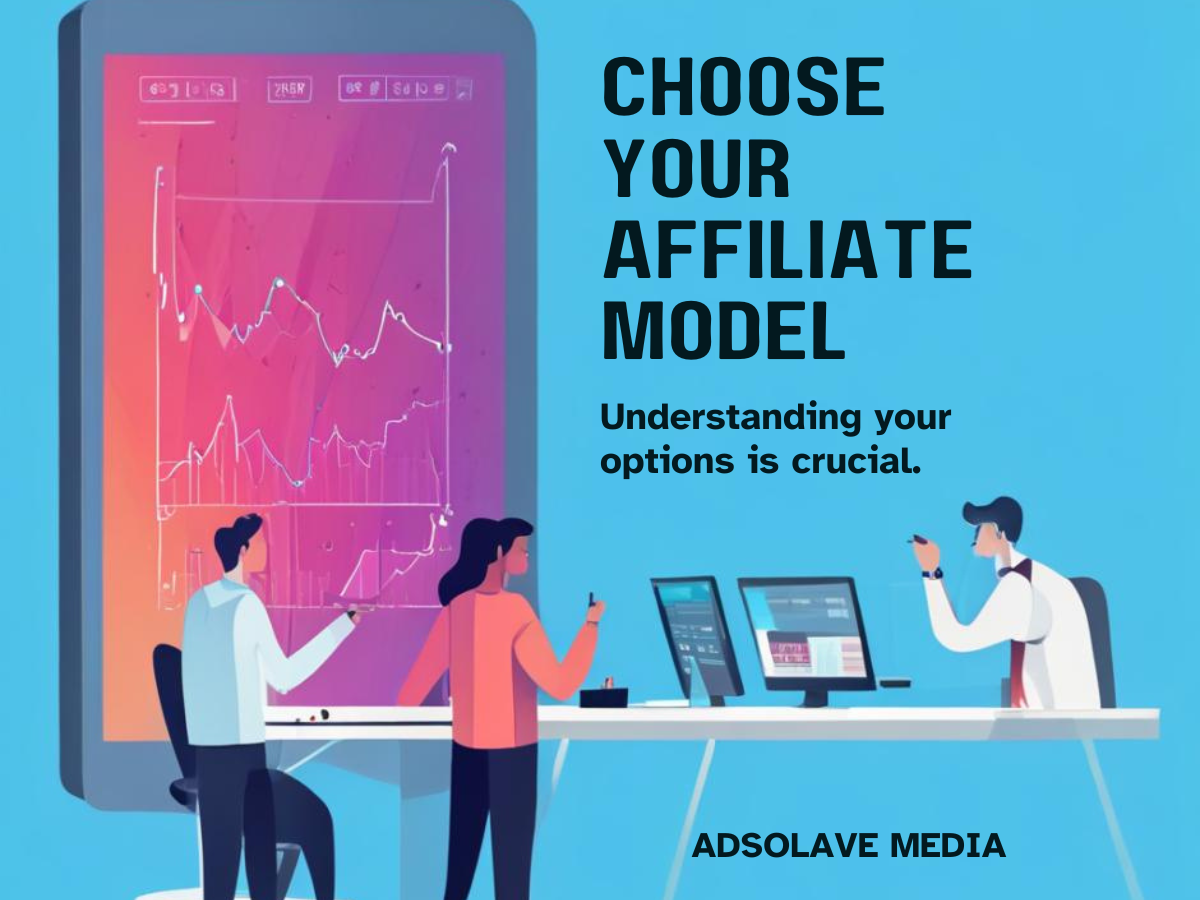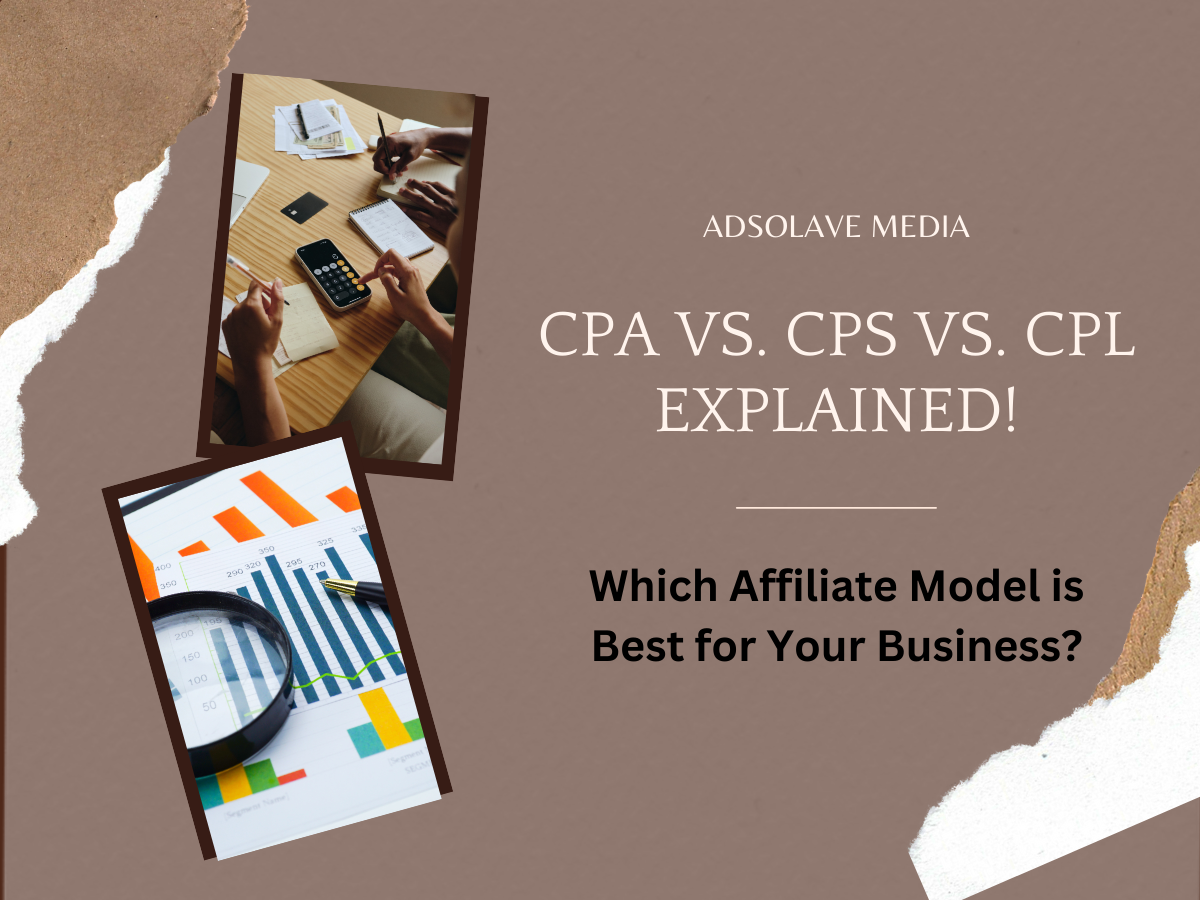Affiliate marketing has evolved into one of the most powerful digital marketing strategies for businesses looking to drive conversions and increase revenue. However, choosing the right affiliate payment model can be challenging. The three most common affiliate pricing structures are CPA (Cost Per Action), CPS (Cost Per Sale), and CPL (Cost Per Lead). Each model has its strengths and weaknesses, and selecting the right one depends on your business goals, budget, and target audience.
In this blog post, we’ll break down the differences between CPA, CPS, and CPL, explore their advantages and drawbacks, and help you determine which model is best suited for your business.
Understanding Affiliate Payment Models
Affiliate marketing operates on performance-based payments, meaning businesses only pay affiliates when a specific action is completed. The type of action varies depending on the payment model chosen:
1. CPA (Cost Per Action)
CPA, or Cost Per Action, is a pricing model where affiliates earn a commission when a user completes a specific action, such as signing up for a free trial, downloading an app, or completing a survey.
Pros of CPA:
- Performance-Based: You only pay when a desired action occurs, ensuring a better return on investment (ROI).
- Lower Risk: No upfront costs, making it a low-risk strategy for businesses.
- Ideal for Lead Generation: Works well for companies looking to collect valuable user data.
Cons of CPA:
- Higher Payouts Per Action: Compared to CPL, CPA commissions can be higher because they require more effort from the user.
- Requires Strong Tracking & Attribution: Ensuring affiliates are credited correctly for conversions can be challenging.
- Potential for Fraud: Some affiliates may use unethical practices to generate fake sign-ups or actions.
2. CPS (Cost Per Sale)
CPS, or Cost Per Sale, is a commission-based model where affiliates earn a percentage of the revenue whenever a sale is made through their referral link.
Pros of CPS:
- Highly Profitable: Since you only pay for actual sales, the risk is significantly lower compared to other models.
- Budget-Friendly: No wasted spend on non-converting traffic.
- Attracts Quality Affiliates: Experienced marketers prefer CPS because of the potential for high commissions.
Cons of CPS:
- Higher Commitment from the User: A purchase requires more persuasion than a simple sign-up, leading to lower conversion rates.
- Slow Scaling: Growing your affiliate program can take time as affiliates need to build trust with their audience.
- Potential for Refunds: If customers request refunds, businesses might need to claw back commissions from affiliates.
3. CPL (Cost Per Lead)
CPL, or Cost Per Lead, is a model where businesses pay affiliates for generating leads. A lead can be a form submission, email sign-up, or any other user action that indicates interest in the business’s products or services.
Pros of CPL:
- Faster Conversions: Since users don’t need to make a purchase, conversions are typically quicker and easier.
- Lower Cost Per Acquisition: CPL campaigns often require lower payouts than CPA or CPS models.
- Great for Email Marketing & Retargeting: Businesses can nurture leads through email campaigns and convert them later.
Cons of CPL:
- Lead Quality Varies: Not all leads will convert into paying customers, so businesses need to evaluate lead quality.
- Requires a Strong Sales Funnel: Businesses must have a solid follow-up system to turn leads into revenue.
- Potential for Fraud: Some affiliates might generate fake or low-quality leads, wasting marketing dollars.
Choosing the Right Affiliate Model for Your Business

Now that we’ve explored the three models, how do you decide which one is right for your business? Here’s a breakdown based on different business needs:
If You’re Looking for Fast Conversions:
- Go with CPL – Since lead generation is simpler than making a sale, this model is great for quickly growing your email list or customer base.
If You Want the Lowest Risk:
- CPS is the safest bet – You only pay when a sale is made, ensuring no wasted marketing spend.
If You’re Focused on Customer Acquisition and Brand Awareness:
- CPA works best – This model allows you to define specific actions that lead to conversions.
If You Run an eCommerce Store:
- CPS is ideal – Since sales drive your revenue, paying affiliates per sale ensures a profitable partnership.
If You Offer Subscription-Based Services or SaaS:
- CPA or CPL could be effective – Collecting high-quality leads and nurturing them into long-term customers is crucial.
If You’re in a Competitive Market:
- Use a mix of models – Combining CPA, CPS, and CPL can help diversify your affiliate program and attract a broader range of affiliates.
Best Practices for a Successful Affiliate Program
Regardless of which model you choose, here are some tips to ensure your affiliate program thrives:
✅ Use Reliable Tracking Software: Platforms like Impact, CJ Affiliate, or ShareASale can help you track conversions accurately.
✅ Vet Your Affiliates: Work with reputable marketers to minimize fraudulent activity.
✅ Offer Competitive Commissions: Attract top affiliates by offering competitive rates compared to your industry standard.
✅ Optimize Your Landing Pages: Ensure your website is optimized for conversions to maximize your affiliate traffic.
✅ Monitor Performance Regularly: Analyze which affiliates drive the best ROI and adjust your strategy accordingly.
Final Thoughts
The best affiliate model for your business depends on your goals, budget, and industry. If you want fast and scalable results, CPL may be your best bet. If you prefer a risk-free, sales-driven approach, CPS is the way to go. And if you aim to balance acquisition and conversions, CPA might be your ideal model.
Experimenting with different affiliate models and analyzing their performance will help you optimize your program for maximum profitability. Whatever route you choose, ensure you’re working with trustworthy affiliates, tracking performance, and continuously refining your strategy to drive long-term success.

